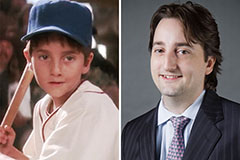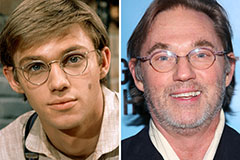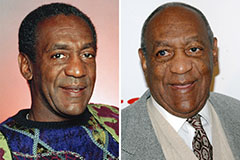Dementia Fall Risk - An Overview
Table of ContentsThe Basic Principles Of Dementia Fall Risk Dementia Fall Risk Can Be Fun For EveryoneThe Only Guide to Dementia Fall RiskDementia Fall Risk Things To Know Before You Buy
A fall threat evaluation checks to see just how likely it is that you will certainly drop. The evaluation generally includes: This includes a collection of inquiries about your total health and if you've had previous falls or issues with equilibrium, standing, and/or walking.STEADI includes testing, evaluating, and treatment. Treatments are recommendations that may lower your risk of falling. STEADI includes 3 actions: you for your threat of dropping for your risk elements that can be improved to try to avoid falls (for instance, balance troubles, damaged vision) to decrease your danger of dropping by using effective methods (as an example, giving education and learning and resources), you may be asked numerous concerns consisting of: Have you dropped in the past year? Do you feel unsteady when standing or strolling? Are you stressed over dropping?, your company will certainly test your strength, balance, and gait, using the complying with autumn analysis devices: This examination checks your stride.
After that you'll rest down once more. Your supplier will check the length of time it takes you to do this. If it takes you 12 secs or more, it may suggest you go to higher threat for a loss. This test checks toughness and balance. You'll rest in a chair with your arms crossed over your chest.
The positions will certainly get harder as you go. Stand with your feet side-by-side. Relocate one foot halfway onward, so the instep is touching the big toe of your other foot. Relocate one foot completely in front of the various other, so the toes are touching the heel of your other foot.
Getting The Dementia Fall Risk To Work
Many falls occur as a result of several adding variables; for that reason, managing the threat of dropping starts with determining the aspects that add to drop threat - Dementia Fall Risk. Several of the most appropriate danger aspects consist of: History of previous fallsChronic clinical conditionsAcute illnessImpaired gait and balance, reduced extremity weaknessCognitive impairmentChanges in visionCertain risky drugs and polypharmacyEnvironmental factors can additionally increase the risk for drops, consisting of: Poor lightingUneven or harmed flooringWet or slippery floorsMissing or damaged handrails and grab barsDamaged or improperly fitted equipment, such as beds, mobility devices, or walkersImproper usage of assistive devicesInadequate supervision of individuals residing in the NF, including those that display hostile behaviorsA successful fall danger management program calls for a complete professional evaluation, with input from all members of the interdisciplinary group

The care strategy need to additionally include interventions that are system-based, such as those that promote a risk-free environment (ideal illumination, handrails, grab bars, and so on). The efficiency of the interventions need to be examined periodically, and the treatment strategy modified as required to mirror changes in the fall risk evaluation. Carrying out a fall danger administration system using evidence-based finest method can decrease the occurrence of drops in the NF, while restricting the potential for fall-related injuries.
Dementia Fall Risk Can Be Fun For Everyone
The AGS/BGS guideline recommends screening all adults matured 65 years and older for autumn risk annually. This screening includes asking patients whether they have fallen 2 or even more times in the past year or sought medical attention for a fall, or, if they have actually not fallen, whether they feel unsteady when strolling.
Individuals that have actually fallen once without injury needs to have their balance and stride evaluated; those with gait or equilibrium irregularities should obtain extra evaluation. A background of 1 loss without injury and without stride or balance issues does not call for further evaluation past continued annual autumn danger testing. Dementia Fall Risk. A loss threat assessment is called for as find out part of the Welcome to Medicare examination

Dementia Fall Risk Things To Know Before You Buy
Recording a drops history is among the top quality indications for loss avoidance and monitoring. A crucial component of risk assessment is a medication evaluation. A number of classes of drugs increase fall threat (Table 2). copyright medicines particularly are independent predictors of drops. These drugs tend to be sedating, alter the sensorium, and harm balance and stride.
Postural hypotension can often be alleviated by lowering the dosage of blood pressurelowering medicines and/or stopping drugs that have orthostatic hypotension as an adverse effects. Usage of above-the-knee assistance hose pipe and resting with the head of the bed boosted might also decrease postural decreases in blood stress. The preferred elements of a fall-focused physical examination are shown in Box 1.
.png)
A yank time above or equivalent to 12 secs recommends high autumn danger. The 30-Second Chair Stand examination analyzes reduced extremity strength and balance. Being not able to stand from a chair of knee elevation without using one's arms shows enhanced autumn danger. The 4-Stage Balance test analyzes fixed balance by having the individual stand in 4 settings, each considerably extra tough.
 Andrew Keegan Then & Now!
Andrew Keegan Then & Now! Charlie Korsmo Then & Now!
Charlie Korsmo Then & Now! Richard Thomas Then & Now!
Richard Thomas Then & Now! Bill Cosby Then & Now!
Bill Cosby Then & Now! Sarah Michelle Gellar Then & Now!
Sarah Michelle Gellar Then & Now!